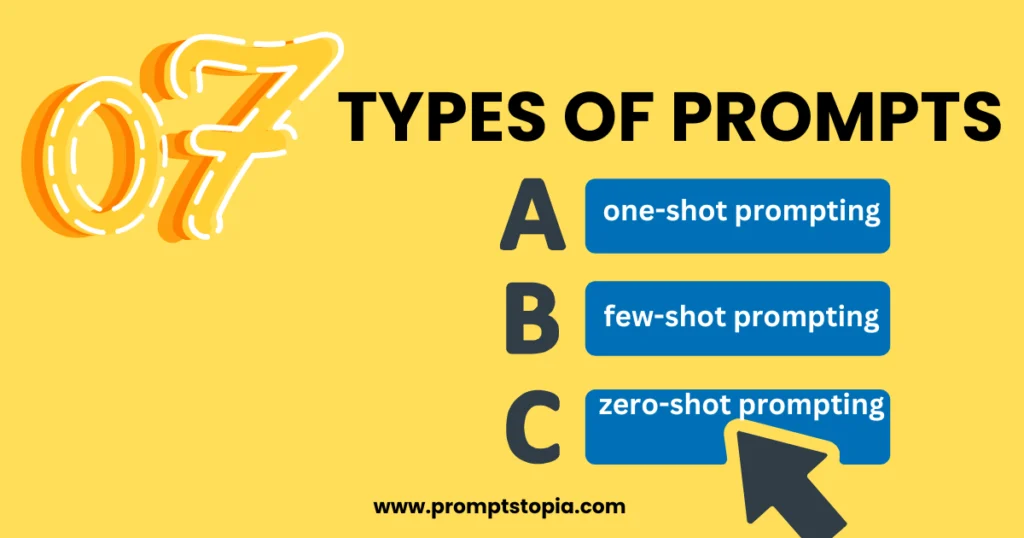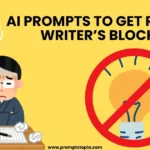Prompt engineering is the future of artificial intelligence as the world is advancing day by day in new fields of technology.
The Ai tools generate results based on the prompts you give them. There are many types of prompts and today we will discuss those types of prompts that are very beneficial to content creators.
But first you need to know about prompt.
What is a Prompt?
The process of designing and improving certain text to get better result from the Ai model is known as prompt. A person who has mastery on quality of prompts is known as prompt engineer. To become a prompt engineer , one must needs to have mastery of coding languages such as python. It is not essential but beneficial for you if you want to go to advance level. Prompt engineering revolves around the concept of making the Ai model your personal assistant which gives you your desired response. These are the answers of some basic prompt engineering questions that gets asked a lot.
TYPES OF PROMPTS
There are some types of Prompts that are very essential for creators are listed below:
- Zero-Shot Prompting.
- One-Shot Prompting.
- Few-shots Prompting.
- Chain-of-Thought Prompting.
- Iterative Prompting.
- Negative Prompting.
- Hybrid Prompting.
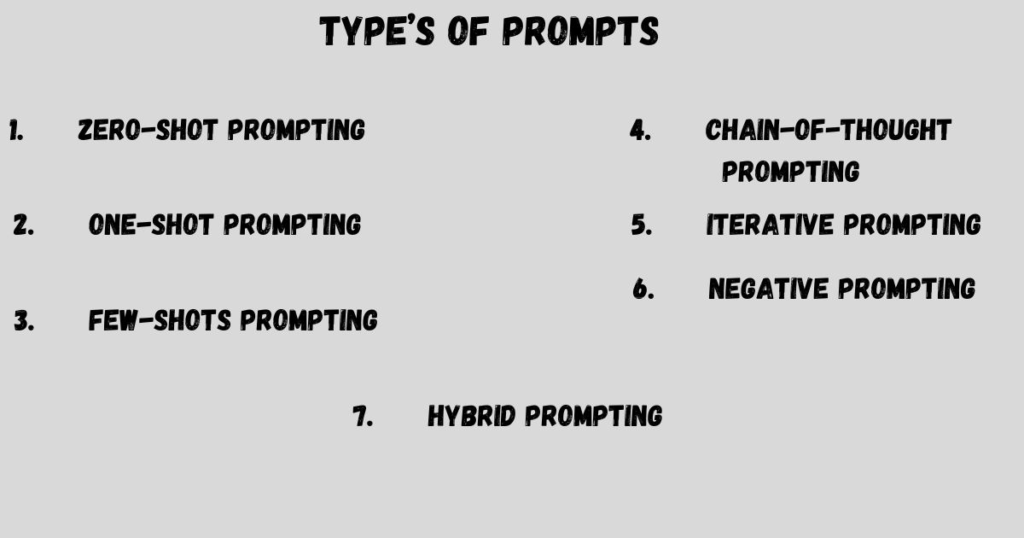
Zero-Shot Prompting:
Zero-Shot prompting is used in natural language processing where an Ai model is asked to perform task without giving specific details and examples. The features of this prompt is that this model is specially trained on the task at hand. The prompts are formed on natural language instructions and questions and the model responds with its vast understanding of language. This can be used for a number of tasks, including classification, summarization, and translation.
It is suitable for quick prompting and it finishes the need for task- specific training and quickly adapts to the most minimalistic setup. It is very flexible with its wide range of tasks but with its pros it also has some cons its accuracy is not as high as other models such as models that are task specific its response can sometimes be off target. Ambiguity worded prompts can lead to unpredictable and unreliable response so in this case careful prompt design is necessary to minimize misunderstandings.
It is also one of the ChatGPT best practices as it requires clear and concise prompts and it requires user to refine prompts for better accuracy and relevance and with it you can also take advantage of the Ai vast knowledge by writing prompts that uses its general knowledge.
Prompt:
“Translate the following sentence into Spanish: The conscious mind is the consciousness that we are aware at the moment, in preconscious state although data that is not presently unconscious is stored in the preconscious mind.”

In the following example we translated a sentence in Spanish using zero-shot prompting as you can see the answer is precise and effective. This prompt is written on ChatGPT which is also an Ai model and is one of the best. Zero-shot Prompting is one of the easiest and quickest ways to write a prompt which is pretty much accurate and reliable.
One-Shot Prompting:
One Shot prompting is a technique in NLP in which the Ai model is given an example to guide its respond for better output. This helps the model in understanding the example and giving a better response it is done for a specific task. The key features of this technique include single example which helps the model to understand the output required. It requires example for handling similar tasks and it also relies on its base knowledge. This type of prompting is very task specific it greatly affects the models accuracy and gives a relevant response.
It is also very easy to use and is efficient and is pretty flexible for various tasks that include translation, classification, summarization, and text generation.
The quality of the prompt relies on the given example if the example is poorly chosen then it can lead to incorrect and wrong response by the Ai model. The model’s ability to generalize from a single example may or may not be limited to certain tasks. Its responses might not always align perfectly with the desired output. To use this type you must be clear and give clear example, also give concise prompts, test and refine prompts based on model’s responses and use it’s pre trained knowledge.
Prompt:
“Summarize the following paragraph. Example: ‘Artificial intelligence is transforming various industries.’ ‘AI is changing industries.’ Now summarize: ‘The quick development of technology is changing our way of life and profession.'”

Prompt:
“Translate the following sentence into French. For Example: ‘ The dog is playing outside in the rain.’ ‘Le chien joue dehors sous la pluie.’ Now translate: ‘The cat is outside the house sleeping during rain.’
One-Shot Prompting is much more precise and accurate than zero-shot prompting it is also much more reliable as it generates a response based on your example.
Few-Shot Prompting:
Few-shot prompting is an advanced technique in NLP processing models where the models is provided with a few examples to perform a specific task and get the desired results. This type of prompt uses the pre-existing data improving performance and accuracy for a given task. This prompts key features are that it requires multiple examples to guide the model into giving even better answer. It enhances the model’s ability to gain better understanding of the task this greatly reduces ambiguity.
These examples helps Ai to adapt to specific tasks. Few-shot prompting improves accuracy and greatly reduces the likes of errors and with this the model can handle more than one complex tasks. To become a prompt engineer it is important for one to use clear and relevant examples and make concise prompts and use pre-trained knowledge of the model to its extent.
Prompt:
Summarize the following paragraphs.
Example 1: ‘With the dawn of artificial intelligence everything is now progressing at twice the speed than it original was it has been a great leap by technology. -> “Everything is advancing at twice the rate than it originally was with the rise of artificial intelligence.
Example 2: Day by day the quantity of fossil fuels are decreasing it is a moment of panic as our economy works on these fuels.’ -> ‘There is a fear because our economy depends on fossil fuels, and their availability is running out.
Now summarize: ‘Alternatives of these fuels is important for our survival as we depend on them greatly in this way we can use Solar, wind, and hydro power to decrease the use of fossil fuels.’
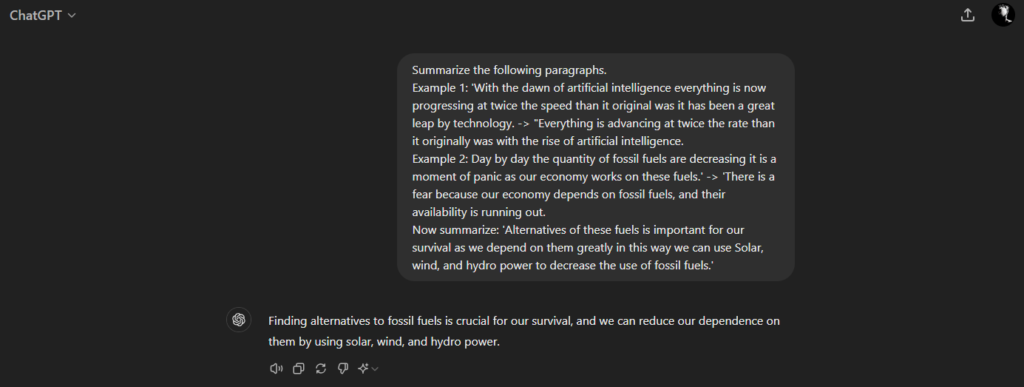
Chain-of-Thought Prompting:
Chain of thought prompting is an advanced prompting technique and is used in NLP where the Ai model is trained to process step by step. This method helps model to break down complex tasks into smaller manageable parts which overall greatly affects models accuracy and makes the model more reliable and precise.
Its key features include step by step reasoning to enhance model’s knowledge. It also breaks down complex tasks in several simpler sub tasks the reason for this to handle intricate tasks that requires multi step reasoning. This improves accuracy and increases clarity and makes the model expert for handling complex tasks. The main challenges faced by this model is prompt complexity, model limitations and increased length.
Prompt:
Solve this math problem:
12 + 29.
First, add the tens: 10 + 20 =
Then, add the units: 2 + 9 = .
Finally, add the results = ?
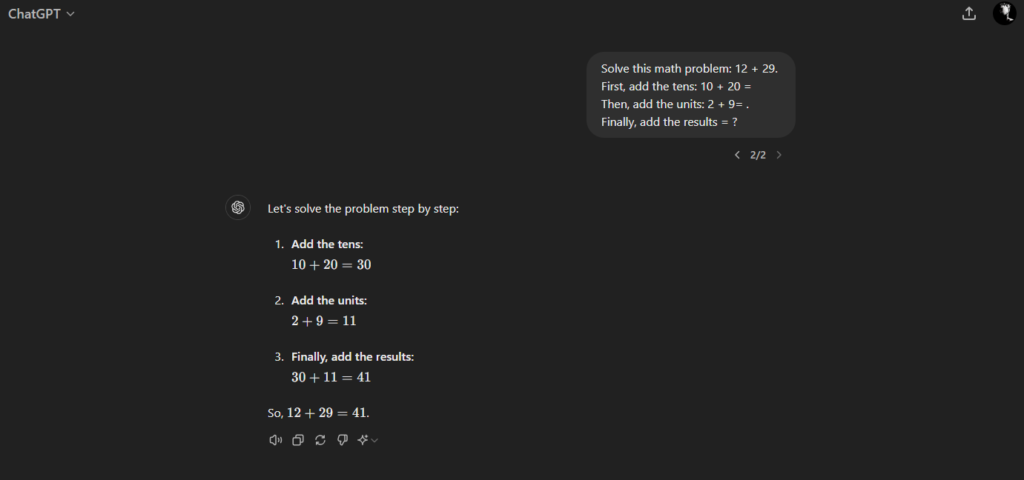
This is one of the best types of prompts that requires breaking down of tasks in several sub tasks so that it is easy for the model to solve the complex task.
Iterative Prompting:
Iterative prompting is a technique in NLP where a series of prompts are used to refine and improve the model’s response. This technique involves adjusting and refining prompts based on the outcome. This process involves generating response and refining it based on its performance. This process requires gradual improvement each new prompt aims to improve the previous one. These are also used as task specific refinement and they adjust based on models performance.
Benefits of this type of prompt includes improved accuracy and flexibility and improved understanding between both the model and the user. But as this type is good there are also some cons, this type is very time-consuming and determining necessary adjustments can be complex and there is also a risk of overfitting which gives less generalized reposes. For this types best practices clear evaluation criteria good context and small adjustments makes a big difference.
Initial Prompt:
Summarize the following paragraph.” Since the rise of artificial intelligence it has greatly impacted almost all sectors that include healthcare, education and transportation. Innovations such as telemedicine, online learning platforms are transforming industries improving the accessibility and efficiency.”
Refined Prompt:
The summary is good but lacks details about the specific innovations.
Refined Prompt:
The summary includes innovations but can be more concise.
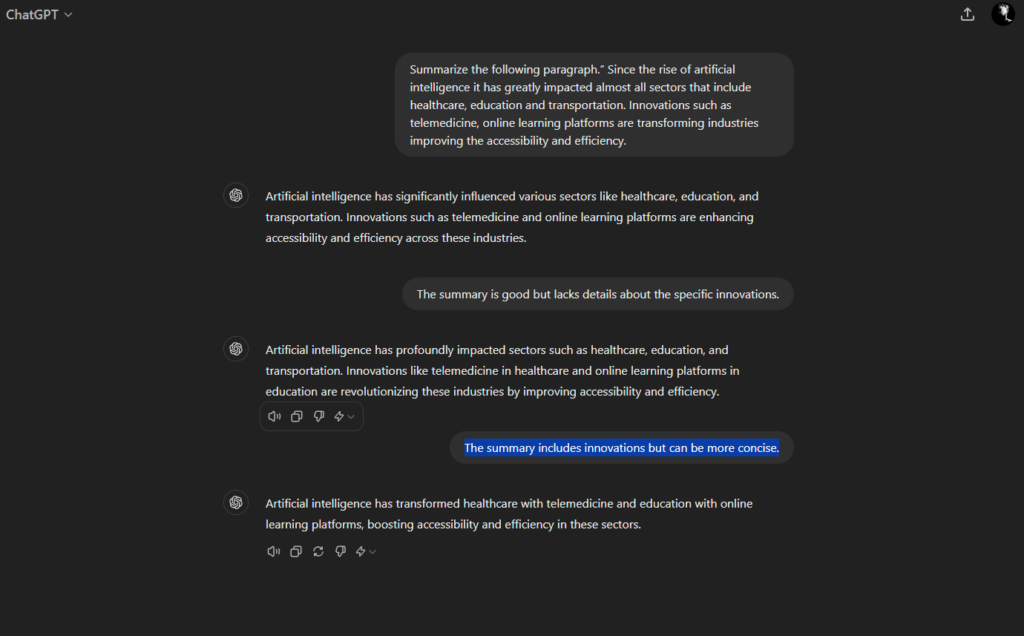
Negative Prompting:
Negative Prompting is one of the great types of prompts that are very advanced and guides model away from generating undesired output. In this process we do not give positive examples or instructions instead we give instructions about what should be avoided.
Always be specify what you want to avoid this helps model into avoiding certain undesirable categories and it clarifies boundaries for the model’s response by defining what is correct and incorrect. It also enhances response quality.
Negative prompting design is very complex and model may still overlook negative instruction. There is also a potential for over-correction.
Prompt:
Describe the new technology product description. Do not mention any technical jargon or complex details that might confuse the reader. Avoid including any comparisons to other products. “‘The new product is designed to make everyday tasks easier with its innovative features and user-friendly design. This product simplifies daily activities with its advanced features and easy-to-use design.”
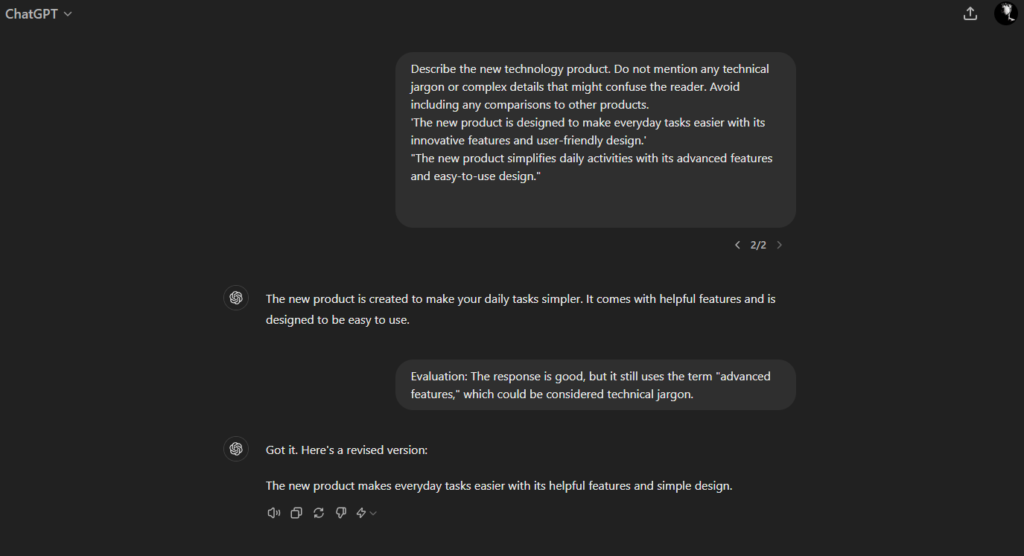
Hybrid Prompting:
It is one of the best types of prompts which combines different prompting strategies by applying hybrid prompting. It aims to improve model’s performance, adapt to complex tasks and produce more accurate responses. Its key features include combination of various prompting techniques such as Zero-shot, One-shot etc. It adapts to various tasks by employing the most suitable prompt method for each task. It also improves overall accuracy and precision. This type of prompt combines different techniques to address various aspects of task and also improves output quality.
The most challenging part of Hybrid Prompting is its complex model design and model complexity in combining prompts it also increases prompts length by a lot.
Prompt:
First, provide a summary of the impact of climate change. Avoid speculative content and focus on factual information. Then, give examples of how climate change affects different regions and industries, using a few-shot approach with these examples:
Example 1: Rising sea levels impact coastal cities by increasing the risk of flooding.
Example 2: ‘Changes in temperature affect agriculture by altering growing seasons.
Finally, use chain-of-thought reasoning to ensure all impacts are covered comprehensively make it as concise as you can and limit words to 100.
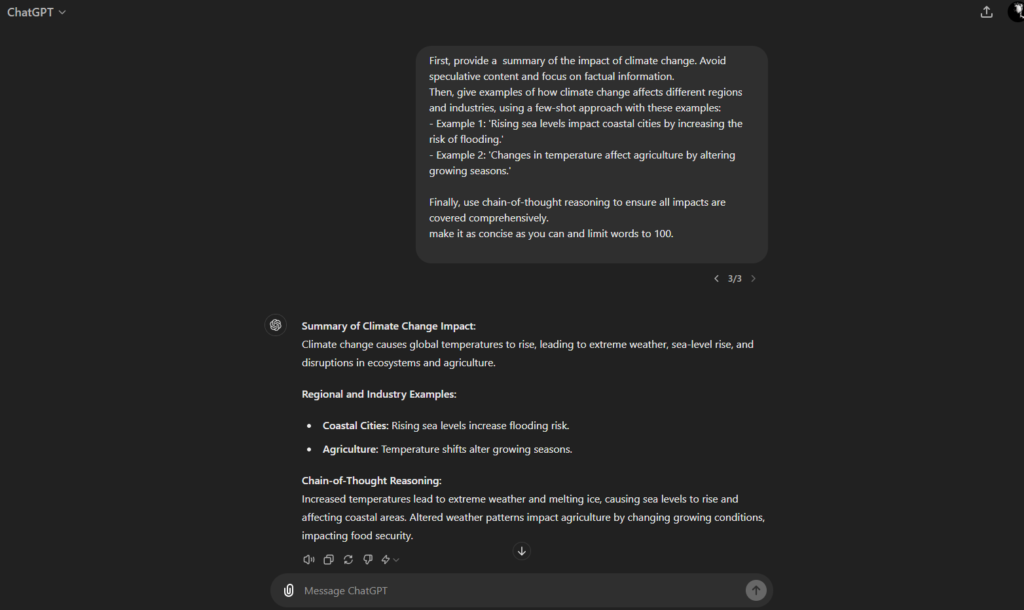
Conclusion
There are many types of prompts but each of those types have their pros and cons understanding their strengths and weaknesses. It allows you to get you your desired response with maximum accuracy and precision. These methods greatly enhance the performance of NLP models. By using these techniques such as zero-shot, one-shot, few shot, chain of thoughts and negative prompting can solve a wide range of tasks with precision and enhanced relevancy.
FAQs
Zero shot prompting produces less accurate or irrelevant response for complex task that requires specific and detailed context.
One shot prompting is basically generality and specificity which makes the model understand the output response which is required better it is much better than zero shot prompting but it is not as accurate as few shot prompting.
This method is useful for doing a series of task such as doing a step by step math problem or problem solving this method is very accurate and gives relevant results but is time consuming.

